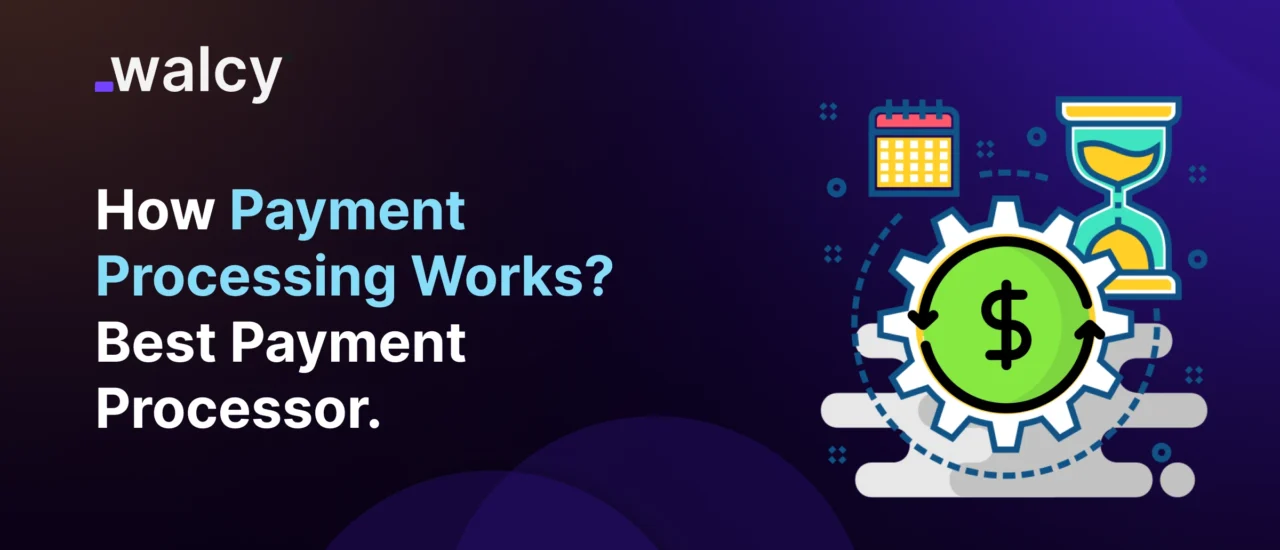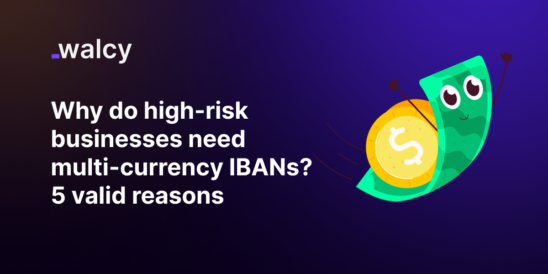In this fast-moving digital economy, effective payment processing may significantly underpin the efficiency of businesses of each degree, ranging from small startups to large enterprises.
In this blog, we are going to take a closer look at how payment processing works, the different types of payment processing systems available, some big players in the industry, and more importantly, how you choose the best payment processor that suits your needs.
That should hopefully set you up by the end of this tutorial to get a more intricate view of how it works and what is available for you.
What is Payment Processing?
Payment processing is the process of managing and facilitating the transfer of money between a company and its clients. Authorization, verification, and payment settlement for products or services are all part of it.
The process is constituted of successive steps which always take place once a customer has purchased through the use of a credit card, a debit card, or any other form of payment.
This describes the way money moves from buyer to seller for transactions to be smooth and secure. It covers authorization up to settlement processes that are important in the general financial system.
Read about: Top Online Payment Methods Across The World.
Payment Processing System
In other words, the electronic payment processing system enables the merchant to easily receive and process the e-payments. Normally, a setup of this kind would involve multi-players in the configuration like the following:
- Merchant: Refers to the business or person selling goods or services.
- Customer: The person buying that good or service.
- Payment Processor: A third-party company that processes the transaction by verifying the payments and allowing the flow of funds.
- Acquiring Bank: This would be the bank that deals directly with the merchant for the processing of card payments.
- Issuing Bank: The bank that issues the customer’s credit or debit card.
- Card Networks: Associations like Visa, MasterCard, or American Express act as a liaison between banks and processors.
How Payment Processing Works: A Step-by-Step Process
Before understanding how the processing of a payment works, it is important to know what makes up the completion of a transaction step by step. The elaboration for the breakdown is hereby given:
Customer-Initiated Transaction:
The customer initiates the transaction and involves releasing payment information, such as card details, online or at checkout in a store. This may be on some websites where card details are typed in and submitted, by swiping the card through some terminal, or with the use of some mobile application that will have the funds transferred.
Authorization Request:
The merchant processor sends an authorization request to the acquiring bank. In such a case, this will contain all transaction details, the amount, card, and identity of the particular transaction. In this context, the processor will just act like a middleman, who would enable the merchant to interact with the involved banks.
Verification:
The request is sent to the issuing bank by the acquiring bank through the card network. Following this, the latter checks whether the account of the customer is sufficiently funded or sufficiently covered for credit to provide for the said transaction. This entails the verification that the card is valid and not expired, with no on-account holds or restrictions.
Authorization Response:
The originating bank issues an authorization response through the card network, after verification, to the acquiring bank, informing the payment processor and, in turn, the merchant. If approved, the transaction will go ahead; otherwise, if declined, it would inform the customer. It contains an authorization code, which is kept by the merchant for his record.
Settle the Transaction:
A transaction’s settlement is affected by the payment processor and confirms to the customer about the purchase. The merchant is given a receipt both in digital and print form to confirm the success of a transaction.
Settlement:
This would be the final stage when the transaction gets authorized. The money would settle from the issuing bank to the acquiring bank, which in turn deposits the money into the account in several days. The time for such settlements may vary on the credit card processor and financial institutions.
Types of Payment Processing
There are a couple of different types of payment processing, each suited to different business models and customer preferences. Following are some of the most frequent types:
Credit Card Processing:
This is one of the most used methods whereby customers can make purchases by use of credit cards. The merchant needs to have an account to receive card payments. Credit card transactions take hardly any time to get processed, and customers prefer this mode of purchase as one needn’t necessarily have cash on them.
Debit Card Processing:
The mechanism for the processing is the same as that of credit cards; however, in the case of a debit card, the amount directly gets deducted from the bank of the account holder. This is the reason why many customers do not fall into debt by using the option of a debit card. Confirmation about real-time payment may also be provided to the customer through the debit card facilitation.
ACH Transfers:
Automated Clearing House, or more colloquially ACH, is a class of transaction that takes place from bank account to bank account, electronically. Major uses include recurring payments, direct deposit, and B2B transactions. Processing via ACH is so inexpensive that regular payroll, utility payments, and subscription services use it.
Read about: Know Everything About International ACH Transfer in 2024
Digital Formation:
More usage of mobile phones demanded options for mobile pay like Apple Pay, Google Pay, and Samsung Pay. Through them, the customer uses his/ her cell phone to make the payment. The usage of near-field communication is employed in these systems, which helps in quicker and safer transactions.
E-Wallets:
These are web wallets such as PayPal and Venmo, which store payment details and, for this reason, allow users to make their purchases online without the need to reach out for card details. They enjoy high usage because of efficiency and speed in purchases.
Clearance of Cheques:
It is more likely to occur in electronic transactions but does happen all the same. It is the process through which money is transferred from the account of the payee to that of the payer following deposition of a cheque in the bank. It takes a few days hence it is not ideal for urgent transactions.
Fees charged to Process Payments
Fundamentally, businesses need to know their payment processing costs. These can greatly differ based on your payment processor, types of transactions, and volume. Some usual forms of fees that exist include the following:
Transaction Fee:
This is a per-transaction fee. It could be charged as a fixed amount or as a percentage of the value transferred, usually between 1.5% and 3.5% of the transaction value.
Monthly Fees:
Some of the processors charge a fixed amount every month for access that is needed for the rendition of their services. That is, it gives access to customer support, software updates, and other services.
Chargeback Fees:
If for some reason there is some discrepancy, and he gets back to claiming a refund of the charged amount, then the processor may charge a fee to the merchant for handling that particular chargeback. Sometimes this fee can be quite huge; hence, a business should take every possible step to minimize disputes.
Setup Fees:
Some of the payment processors will even charge a one-time setup fee to set up the merchant account. The cost can be determined by how complicated the setup could have the potential to be.
Payment Gateway Fees:
If you process any online payments, you will notice additional fees for utilizing a payment gateway that makes possible secure transmission of transaction details between the retailer and also the processor.
The Best Payment Processors
When choosing any payment processor, it usually depends on the fee charged, features offered, ease of use, and customer support, among many other factors.
Now, some of the highest-rated firms offering their payment processing services in the market are described below:
Square:
Square is best for small-scale businesses. It offers fluent ways of processing your payments. The best part is, it involves no monthly charges. Also, it features inventory management, tools to retain your customers engaged, and in-depth analytics. Square has been the favorite of both retailers and service providers due to its simplicity and robust reporting.
PayPal:
As one of the more recognizable names in online payment options, it is easily integrated and works seamlessly for both online and in-person sales. PayPal is thought to have robust buyer and seller protection policies that make PayPal a trusted platform with consumers and merchants alike.
Stripe:
Stripe is also one of the more robust options for businesses that are a bit more tech-savvy, carrying one of the more developer-friendly APIs. It also supports an enormous number of payment methods and currencies, so it works well for businesses targeting international sales. It boasts great documentation and is highly customizable for businesses looking to provide a specific payment experience.
Net:
Many companies depend on this e-payment gateway not only because of its security aspect but also due to the integrations that are provided. It is suitable for any online store and brick-and-mortar one, too. Yes, it supports recurring bills and customer information management.
Adyen:
This international payment processor was chosen because it operates at a wider scale of businesses for varied alternative methods of payments and currencies. Its platform has high scalability with high volumes of transactions.
Braintree:
Owned by PayPal, Braintree serves as a facilitator of safe yet flexible online and mobile processing. Since it has always supported all types of popularly known client payment methods such as credit cards and digital wallets, it fits well in any business willing to give their customers a wide variety of options.
Things to Consider While Choosing the Payment Processor
With so many choices for finding the right payment processor, there is a range of key features that will go into making the right selection for your business.
Transaction fees:
These are given by each processor on its schedule. For the estimation to come up, the per-transaction fees charged, monthly fees, and chargeback fees have to be estimated on their part. Then, estimate your volume of transactions and try to come up with an approximate total from that particular processor. Understand these in advance to avoid any surprises down the line.
Integration:
The processor must integrate seamlessly into your e-commerce platforms, accounting software, and inventory management. A very smooth integration process minimizes disruption to your operation while increasing efficiency.
Methods of Payment Supported:
Ascertain the type of payments you wish to receive, such as credit cards, debit cards, ACH Transfers, Mobile Payments, and E-wallets. The more you offer, the better it is for customer experience.
Security Features:
To protect your company and client data, choose processors with the finest security features, such as PCI compliance, encryption, and fraud detection tools. Security breaches will cost you dear and affect your goodwill. Let security be one of the top priorities in your selection.
Customer Service:
Reliable customer service is critical, particularly those defining moments that are so crucial in any transaction. Inquire about the processors who will provide support 24/7 on multiple lines of communication: by phone, email, and chat. Knowledge of such support may allow dealing with technical failure or disputed charges.
User experience:
An intuitive, user-friendly front-end interface means both the merchant and customer know how to use the payment system more effectively; therefore, it increases customer satisfaction with the overall service. From the customer’s point of view, the checkout experience can’t be too cumbersome; customers will abandon their shopping cart if it is too difficult to navigate.
The Future of Payment Processing
The advances in technology are making payment processing increasingly advanced. Some trends that form the future of payment processing follow:
Contactless payments:
Along with the rise in NFC technology, contactless transactions are seen to have great growth; customers tap their cards or mobile devices for quick transactions. This trend, therefore, finds greater significance in retail settings since speed and convenience are major issues in this setting.
Cryptocurrency:
Whereas increasingly, there are more types of cryptocurrencies that find general acceptance, this option has started to be considered by businesses as a way to add to their types of payment. It could also be one more way of marketing toward new audiences, reaching those technology-savvy customers who would look for alternative ways of paying.
Artificial Intelligence:
AI is being used to heighten fraudulent detection and improve customer service. Algorithms in machine learning might study, for instance, transaction trends indicative of suspicious patterns, and chatbots would support customers with inquiries about their payments.
Subscription Services:
Subscriptions have become so prominent that it became important that payment processors, too, move into subscription management. This indeed helped companies in the stream of software and e-commerce reap benefits by automating payment processing.
Advanced Security:
Advanced security has been developed by the payment processor starting from biometric authentication up to tokenization to protect customers’ data and transactions against cyber threats that have become so evolutive.
Conclusion:
Payment processing involves one of the very important middle functions of every type of business transaction, whether it be selling a product or offering a service.
The perfect payment processor concerning specific business needs can be identified by considering various companies offering their services concerning transaction fees, integration capability, The method of payments supported, security features, and customer support.
With technology ever-improving, rest assured that new developments in payment processing will keep your business updated to stay competitive in the constant market evolvement.
Be it a small startup or a large corporation, an efficient advanced system of processing will easily enable flawless transactions, boosting customer satisfaction.
This will also be important in instilling confidence in you among your clientele, and this way, one should invest in the right type of processing system that addresses convenience and security. Your processor of choice gives your business an edge over other competitors in digital commerce.
Do follow us on Facebook and LinkedIn, to stay connected with us.



